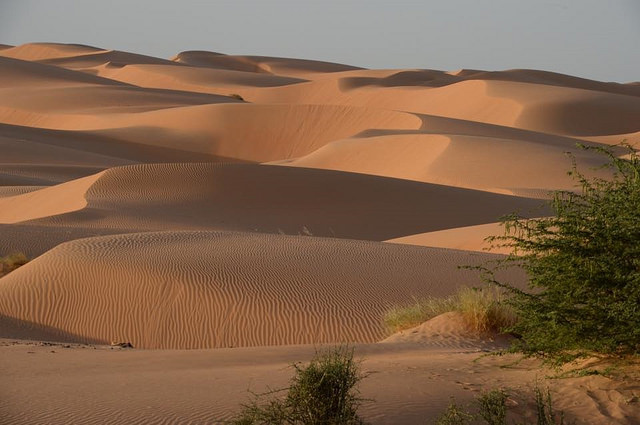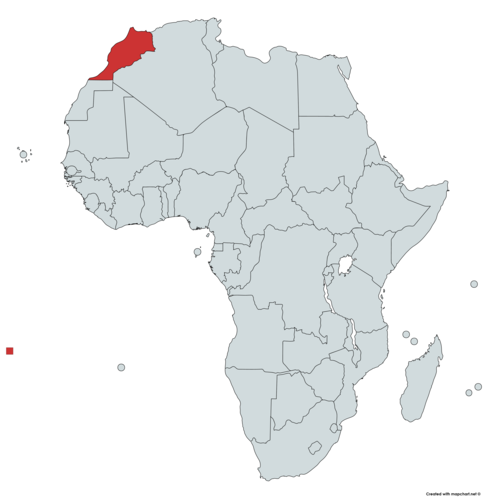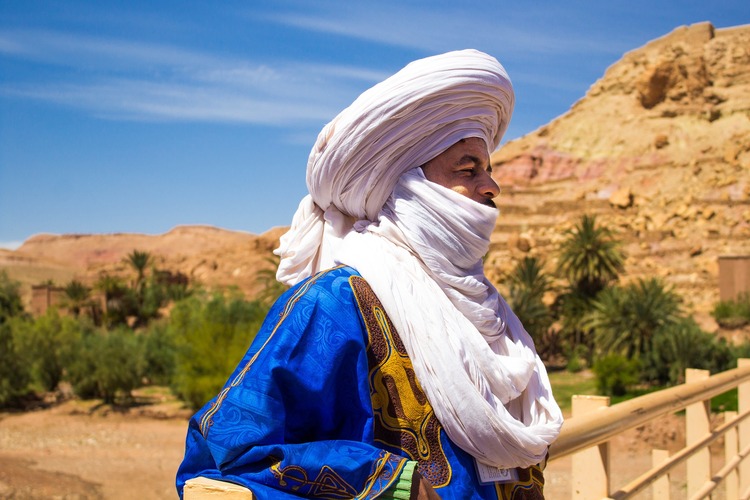Information
- MEDINA (Medina in the Maghreb and North Africa in general is the old part of the city, built during the Arab rule. As a rule, the medina is surrounded by a wall. Usually inside the medina there are rather narrow streets (sometimes less than a meter wide), which make up real labyrinths.
Famous Medina of Morocco:
• Casablanca
• Fez is the largest medina in the world.
• Essaouira
• Marrakech
• Rabat
• Tangier
WE WILL VISIT EACH OF THEM!
- KASBA (in Morocco, the name "kasbah" is used for fortifications outside cities, especially in the Atlas mountains (Bulawan, Beni Mellal). They were built by order of the rulers (especially Moulay Ismail ibn Sherif) to control the coast and rear from their always restless Berber tribes.At the end of the 19th century, the name "Kasbah" was transferred to the fortresses created from clay. They were built by order of the Berber princes in southern Morocco. Often the concept of "Kasbah" is applied to the residential fortresses (tigrett) of the Berbers their military use was in the background).
- IMPERIAL CITIES (Imperial cities are the term used in Morocco to refer to the four historical capitals of the state:
• Fez is the capital of the Idrisids, Marinids and Wattasids.
• Marrakech is the capital of the Almohads and Almoravids.
• Rabat is the current capital of Morocco.)
WE VISIT EACH OF THEM!
- SUK (Souk is a shopping center and commercial center of a city in Arab countries. Market in any Arab, Berber, and sometimes European city.
Initially, the bough was settled at some distance from the city on the caravan route, where the goods of one or several caravans were transported. The bitch time was also a period of celebration and entertainment, when artists, storytellers, poets and dancers performed before the people. These seasonal markets continue to fulfill this cultural function, among other things. Over time, with the growth of cities, the importance of markets increased and they began to be equipped as permanent bazaars already in the city center. The large bitch is divided into several small specialized markets. For example, gold, textile, spice bough and others.)
- ATLAS MOUNTAINS, GORGES AND PASSES.
- UNESCO World Heritage (The list of UNESCO World Heritage Sites in Morocco includes: Medina of the city of Marrakech | Old and new Rabat | Medina of the city of Fez | WE WILL VISIT EACH OF THE LISTED PLACES.
- Atlantic COAST, beaches, ports, fishing villages
- SAKHARA Desert
- culture, traditions, history, people, music.
Tour program:
-
Casablanca Day 1
Arrival to Casablanca, Sightseeing tour
Arrival in Casablanca, meeting at the airport.
Sightseeing tour of the "White City" of Casablanca. You will visit the Square
United Nations - largest square in Casablanca, Hassan II Mosque outside, Corniche.
Transfer to Rabat.
Dinner and overnight at the hotel.
-
RABAT- Tangier Day 2
Sightseeing tour of Rabat, moving to Tangier
Sightseeing tour of Rabat - the political capital of the Kingdom of Morocco since 1912. This well-designed city consists of wide shady alleys, with a central park of amazing landscape design, with impressive quarters for foreign embassies and ministries. the citadel Kasbah Oudayas, the unfinished tower of Hassan, and
the magnificent Mausoleum of Muhammad V.
Further transfer to Tangier.
Tangier is one of the most ancient cities in Morocco , located on the shore of the bay
the foot of the hills, where the Atlantic Ocean meets the Mediterranean Sea. Tangier connects Europe and Africa, the Mediterranean Sea and the Atlantic Ocean, so Moroccan, European and African cultures are mixed here. This port has been mentioned since 500 BC. According to Greek mythology, its name comes from the name of Antaeus's wife, Tinga.
Arrival to Tangier. Sightseeing tour of the city of Tangier.
Dinner and overnight at the hotel.
-
TANGER- SHEPSHAUEN Day 3
Transfer to Chefchaouen
Transfer to Chefchaouen. Arrival to Chefshfuen.
City tour. A walking tour of the city is an opportunity to walk through a place that was once forbidden for visiting by the Gentiles. Located on the slopes of the Rif Mountains, Chefchaouen is known all over the world, first of all, for its unusual architecture. The walls of the houses are painted in various shades of blue and light blue - a color that reminds believers of heaven and God.
After lunch, transfer to Fez. Check in at the hotel. • Free time.
Dinner and overnight at the hotel. -
FES Day 4
FES - the oldest imperial city in Morocco
FES is the oldest imperial city in Morocco. The rich history of Fez, the ancient capital of Morocco, endowed it with two "old cities" at once - medina. The Royal Palace, Jewish Cemetery and Boujeloud Gardens is Fes el Jdid. The most confusing medina in the world is Fes al-Bali, with 14 gates, 6,000 streets, 200 mosques and 180 temples.
Visit to the medieval Medina of Fez (Fez el-Bali). Medina developed in the 9th century and is still alive and well in the 21st century. Today it is the pride and main attraction of Moroccan Fez. Narrow, winding streets, fountains in elegant courtyards, colorful souvenir shops, the hustle and bustle of the bazaar combine into a unique picture of a completely different world. Many modern goods are sold in the Medina, and although many of them are exclusively for tourists, the atmosphere of the old city is very strong.
Also included in the program are:
Bu Inaniya Madrasah is not just a former Muslim religious school, but also one of the most interesting sights of the ancient city of Fez. She is one of the outstanding examples of world architecture.
The complex is richly decorated: luxurious faience decor, exquisite plaster molding and wood carvings. On the facade you can see a complex old system of water clocks, which are a unique example that has survived to this day.
The Karaouin Mosque is perhaps one of the most visited places in Fez. The mosque is striking in its size - its area is about 1600 square meters. The mosque can accommodate about 20 thousand believers.
Fontaine Nejjarine - This is one of the most beautiful fountains
the historical part of the city, located in a quiet picturesque square.
Lunch at a restaurant in Medina (extra charge).
After lunch, visit the famous markets of Fez, including the famous Dyers Market.
Additionally, we offer dinner in a traditional restaurant with a show program
imitation of a Moroccan wedding!
Dinner and overnight at the hotel.
-
FES - MERZUGA Day 5
Departure to Merzouga through Midelt, Rezezd to Arfoud

After breakfast at the hotel, check out Merzouga through Midelt .
Midelt is the gateway to the Atlas Mountains, the Kasb and Castles area and an important
mining center. Midelt is also famous for its handicraft art, especially Moroccan carpets (“hanbel”). On the road to Midelt, you will pass through the resort town of Ifrane and Azru, with its Swiss-style chalets and traditional handicraft markets, and along the cedar forests and wide plains.
Lunch (extra charge).
Preuse in Arfoud. Dale transfer by off-road from Arfoud to Merzouga.
Dinner and overnight in bivouacs in the dunes.
Bivouac - a spacious tent, with typically Moroccan art
Decorations, traditional handicrafts and Berber carpets. Comfortable with all the necessary items, beds, etc.
Accommodation from 2 to 4 people in a tent. Lighting: generator, spotlights, oil lamps and candles. Toilet-bio, shower and sinks with cold and warm water, mirrors, soap and towels.
-
MERZUGA - TINGER - TODRA - UARZAZAT Day 6
MERZUGA - TINGER - TODRA - UARZAZAT
Breakfast at the hotel.
After breakfast, transfer to Ouarzazat via Tingir, Todra, Kelaat-Mgoun,
famous for growing roses and oasis Skura.
Arrive in Ouarzazate. Tour of the city of Ouarzazate will begin with a tour of the Kasbah Taouirt built by the influential family Glaoui.
Additional option: Lunch in a restaurant overlooking the Kasbah.
After lunch, on request, you can visit the Atlas Studio Film Studio (paid
entrance).
Dinner and overnight at the hotel
-
UARZAZAT - MARRAKESH Day 7
UARZAZAT - MARRAKESH
After breakfast, moving to Kasbat Ayt Benhaddu , a clay fortress city and a UNESCO World Heritage site, is considered the best preserved Kasbah in Morocco. Inspection of the Kasbah.
Moving to Marrakesh. Arrive in Marrakech.
Dinner and overnight at the hotel.
-
MARRAKESH Day 8
MARRAKESH
City Tour . You will visit the Majorelle Garden, created by the French
artist Jacques Majorelle, and then restored by Yves Saint Laurent. You
You will see the Kutubia Mosque, the tomb of the Saadid dynasty and the Bahia Palace.
Lunch at a restaurant in Medina (at an additional cost)
After lunch, stroll through Medina (the old town), gradually approaching
famous square Jemaa El Fna. You will pass on the best markets of Medina, where
each quarter corresponds to a particular craft.
Evening Dinner (national Moroccan dishes) at
accompanied by folk performances of groups of different regions of Morocco. Then
play Dzhigitovka (Fantasia).
Dinner and overnight at the hotel.
-
MARRAKESH-ASSUEYRA - AGADIR Day 9
MARRAKESH-ASSUEYRA - AGADIR
Departure from Marrakesh to Aadir via Essueir.
On the way to visit the Marjana Argan Production Cooperative
Oils: 14 kilometers from Essaouira.
Essueira is the undisputed center of Moroccan art; there are many galleries located inside the fortress walls, among which Frederick Dumgaard’s art galleries and “Othello” are most famous. Local craft shops are located along Sikhain Street. Lunch at the fish restaurant (extra charge).
Transfer to Agadir . Check in at the hotel. Free time.
Dinner and overnight at the hotel.
-
AGADIR - AIRPORT Day 10
Transfer to the airport for the return flight
Breakfast at the hotel.
Free time.
-Transfer to the airport for the return flight.
-Or rest in Agadir for a few days.
- Imperial cities
- Ancient medinas
- Chefchouan Blue City
- Major markets, including the leather market in Fes
- UNESCO Monuments
- Atlas Mountains
- Ancient castles of the kasbah
- Berbers
- Desert
- Fishing villages
- Atlantic
- Traditional cuisine, culture, history, people, music
Countries

MOROCCO
Program cost per person in 1/2 dbl, EUR accomodation - double room
|
Low season 01.11, 15.11, 29.11 |
Midle season 07.06, 14.06, 21.06, 28.06, 05.07, 12.07, 19.07, 26.07, 02.08, 09.08, 16.08, 23.08, 30.08 |
High season 26.04, 03.05, 10.05, 24.05, 31.05, 06.09, 12.09, 20.09, 27.09, 04.10, 11.10, 18.10, 25.10 |
|
Group from 6 people |
||
|
1100 |
1135 |
1170 |
|
Group from 4 people |
||
|
1420 |
1450 |
1490 |
|
Group from 2 people |
||
|
2260 |
2290 |
2320 |
Surcharge for single occupancy
Single supplement 455 Euro
Included
• Assistance at Dakar airport upon arrival and Bissau airport upon departure
• Transfers and tour in a great variety of 8 different transports, each fitting the different geographical environment, allowing maximum interaction with the local peoples, comfort and fun: minibuses/microbuses, 4WD vehicles, local calash (private use), local bush taxi called “taxi brousse” (private use), donkey chariot, local motor boat (private use), speedboat fitted for ocean crossing to the Bijagos Archipelago.
• Tour Leader (languages spoken: English, French, Italian and Spanish)
• Tours and visits as per the programme
• Accommodation in standard rooms/bungalows/permanent tents as per itinerary
• All meals as described, from breakfast of day 2 to lunch of day 14.
• Mineral water in the bus/car/boat during the visits, up to 1 bottle a day.
• Entrance fees to parks, concessions, protected areas and cultural sites, festival and events as in the program.
• Pass for carnival when applicable
• First Aid box
• All service charges and taxes
Not included
• International flights to Dakar and from Bissau
• Visa fees
• Mineral water and drinks at restaurants and hotels.
• Portage
• Fees for personal photos and videos
• Personal insurance (compulsory).
• Tips for drivers, guides and hotel staff
• Any item of personal nature such as phone calls, laundry, etc.
• Whatever is not mentioned as included
Information
• Due to the limited quantity of available rooms, please book in advance.
• VISAS: Senegal – not required for EU, USA and Canada citizen (ask complete list). Gambia: please, cheack; Guinea Bissau - single entry visa required and obtainable during the tour (please advise if we have to arrange for it)
• VACCINATIONS: Yellow fever – compulsory; malaria prophylaxis - highly recommended; cholera not necessary at the moment but to be checked upon departure
• MEALS: lunch - restaurants (tourist menus) or cold picnic; dinner - at the hotel restaurant (complete tourist menu).
• LUGGAGE: max 20 kg and in duffle bags, best if waterproof; when on the speedboat, passengers may get splashed by water or foam, we advise to protect any camera equipment.
• TRAVEL INSURANCE: Not included. Mandatory for medical assistance, repatriation, material and physical damages. We are not responsible for any material and physical damage during the tour
• MEANS OF TRANSPORTATION: on roads and tracks by Minibus or 4x4, speed boat on Cacheu River and speedboat fitted for ocean crossing to the Bijagos Archipelago.
• TIDES: with each departure, visits could be re-scheduled as per the tides; all will be visited but maybe in a different order.
• ACCOMMODATIONS hotels and lodges are always chosen with maximum care, however due to possible lack of availability in some hotels, the Tour Leader may have to replace some hotels during the tour itself with others of similar standard. In some hotels single rooms are not always granted. One hotel we use only has 8 rooms.
• All our trips are designed to be flexible so that we can adapt to external conditions, and take advantage of opportunities that arise once there.
• Considering the special nature of the journey, some parts may be modified due to unpredictable factors and are based on unarguable decisions of our Tour Leader. Costs originating from such variations will be sole responsibility of the participants. Of course the Leader will do his/her utmost to adhere to the original program.
• There are two border-crossing, flexibility is necessary
• Prices could change in case of major changes in services costs, beyond the organizer’s will





